Project Management Guide for Beginners in 2025: Everything You Need to Get Started
If you’re new to project management and aren't sure where to start, our project management guide for beginners will teach you everything you need to know about project planning and management before you embark on a career as a project manager.
Key Takeaways: Project Management Guide
- There are numerous courses and certifications that teach the ins-and-outs of project management that aspiring contract and freelance project managers can take to enhance their knowledge.
- Take time to learn about the various project management methodologies so that you know which methods are suitable for software development, construction, product development and more.
- Spend time learning about the areas that project managers are responsible for throughout the life cycle of a project. The more familiar you are with them, the more comfortable you will be when pitching, planning and executing projects.
If you’re ready to become a project manager and want to be responsible for delivering projects and deliverables on time while working with strict budgets and often tight deadlines, our project management guide for beginners is for you.
In our beginner’s guide, you’ll learn what a project is and the role a project manager plays. We’ll also teach you about project management methods, project lifecycles, areas of project management, software and what it can do for you.
This guide will also list some of the best project management software, plus share eight helpful project management tips that will put you on the road to success. Let’s dive in.
-
12/25/2023 Facts checked
Our project management guide for beginners has been rewritten with new information and uses an easy-to-read format.
Project Management Basics: What Is a Project?
A project is a group or set of tasks, usually split into five key phases: initiation, planning, execution, monitoring and closing.
Avoid Costly Project Management Mistakes – Get Free Tips Today!
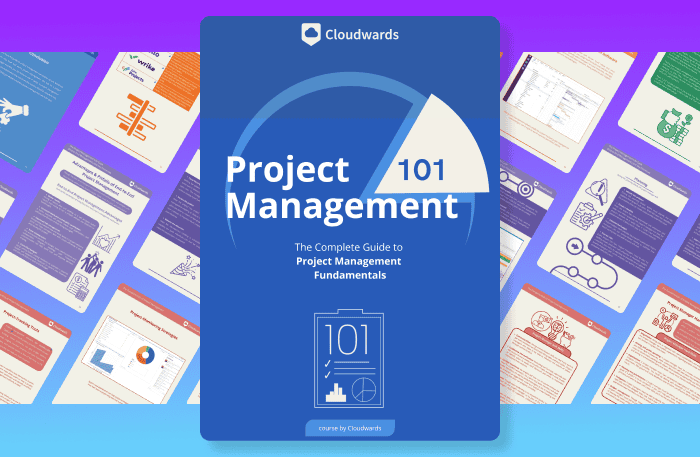
- Discover 10 fundamentals of project management
- Understand step-by-step plans for PM execution
- Learn tips to avoid 5 common mistakes by beginners
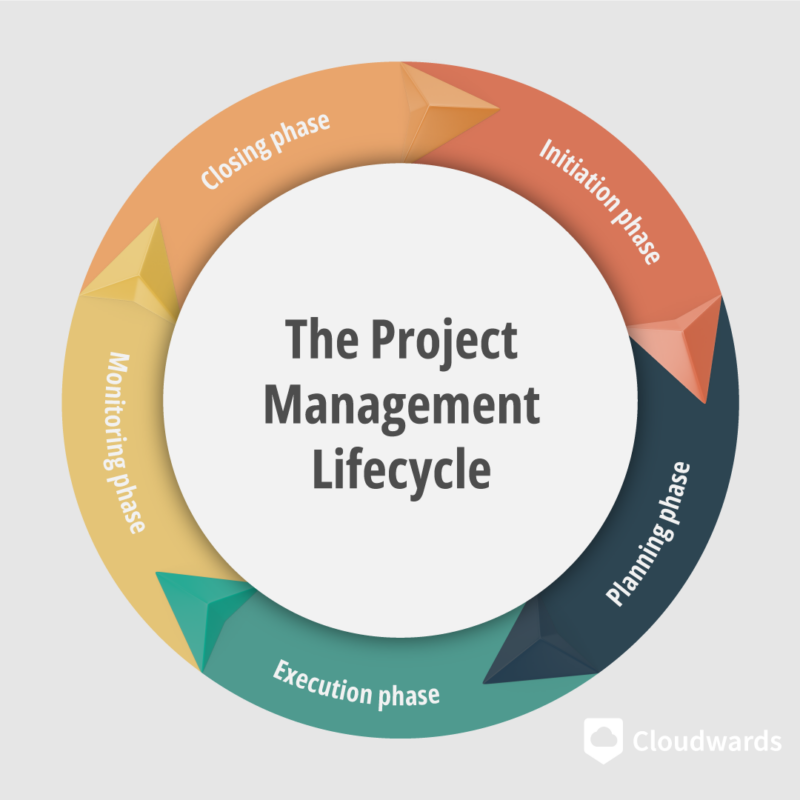
These phases must be completed for a team to reach a set goal or achieve an end result for themselves or a client. Projects are common in all businesses, enterprises and government organizations, and the need for project leaders is constant.
What Is Project Management?
Project management is a process that sees a manager initiate, plan, execute and lead a team through a series of project tasks that result in an end goal or deliverable. A well-planned project management process will help ensure that the project meets all time and budget requirements throughout the project life cycle.
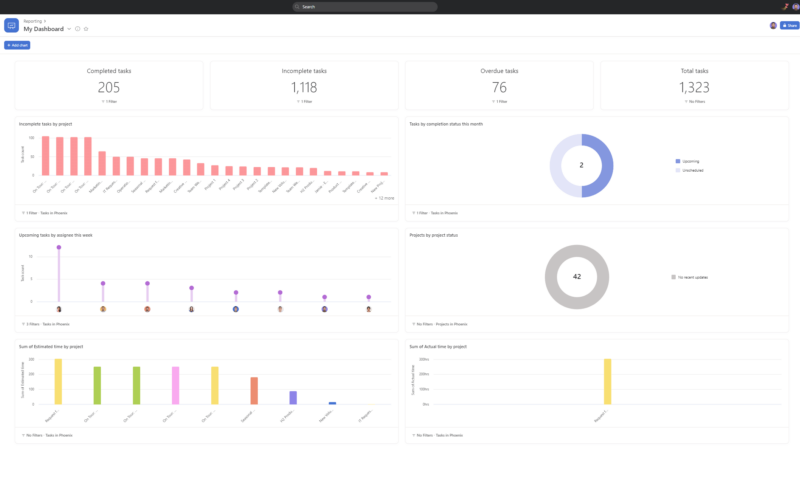
multiple streams of project information at a glance.
What Are Project Management Methodologies?
A project management methodology is a set of project management principles that help guide teams to deliver a high-quality product on time and in budget to your client. Below, we’ll briefly look at the most popular methodologies.
Popular Project Management Approaches
- Waterfall — A highly structured, traditional project management framework that requires each project stage to be completed before moving on to the next.
- Critical Path Method — Similar to Waterfall, but CPM takes dependencies into account, which means the next task cannot start until the previous one is finished.
- Agile — A set of principles and values that champion collaboration, communication and adaptability that are often used in software development projects.
- Kanban — An Agile, visual framework that sees tasks pulled from a catalog or to-do list. As tasks are worked on, they move through a series of work stages (for example, in progress, under review) until completion.
- Lean Project Management — An Agile methodology that uses kanban boards and their global views to ease workloads, cut unnecessary tasks, reduce waste, improve efficiency and deliver maximum value to the client.
- Scrum — A more structured version of Kanban that relies heavily on communication, collaboration, and a series of time-boxed work events called “sprints.”
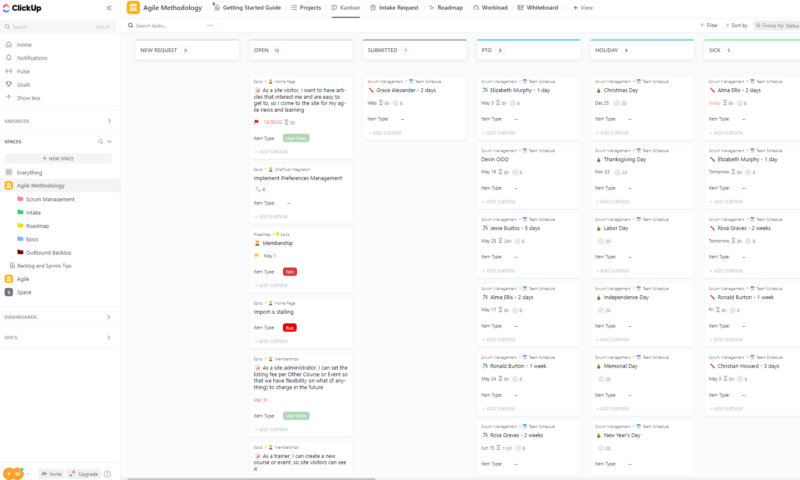
What Is a Project Manager?
Project managers are individuals who oversee an entire project from start to finish. Managers are responsible for planning, organizing, budgeting, resource management, executing, monitoring and closing projects. As leaders, they’re also responsible for project team members and must manage them with effective communication and collaboration processes.
Why Is Project Management Important?
Project management is important to keep the numerous moving parts or areas of a project in line; without it a project could quickly fall into disarray. Successful projects will have a manager who plans meticulously for all potential problems and outcomes.
What Are the Areas of Project Management?
- Schedule management — Managers create a schedule that includes milestones and due dates for project tasks.
- Cost management — The process of estimating, creating and monitoring project budgets via methods like activity-based costing.
- Scope management — Keeping on top of the project and ensuring milestones and task due dates are met, and any newly requested features are planned accordingly.
- Resource management — Project managers must oversee the procurement of staff, materials and equipment needed to complete the project.
- Communication management — Project managers or Scrum masters must schedule and hold frequent team meetings and decide which communication tools to use.
- Task management — Managing tasks by ensuring team members are assigned, due dates have been set, and there are no problems that could cause delays.
- Stakeholder management — The process of identifying stakeholders and communicating with them to determine their demands and expectations.
- Risk management — Managers must complete a risk assessment and plan for any potential problems so that they can be dealt with swiftly if they arise.
- Quality management — Ensuring that the deliverable for your client meets their expectation during every step of the project.
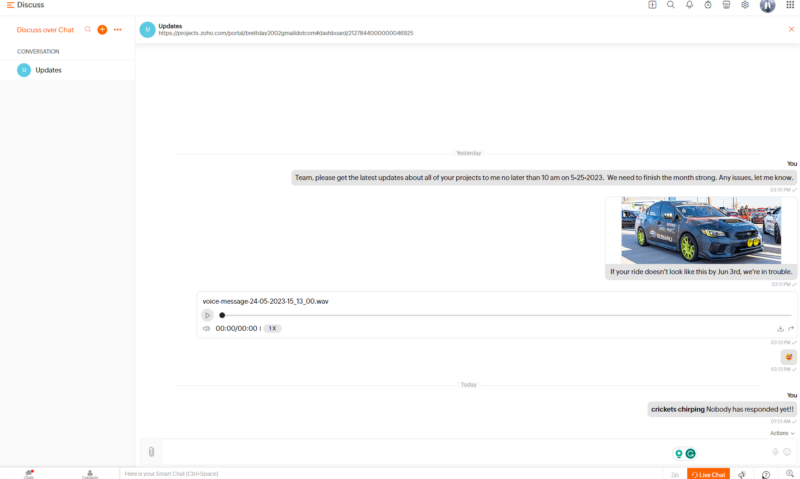
you need; if it doesn’t, you can always use tools like Slack or Zoom.
What Is Project Management Software?
Project management software is any program that supports common project management methods and tools. Project managers and team members use project management software — including some of the best free project management software — to plan, organize and track project tasks and project metrics. We’ll cover the types of tools popular software options support below.
What Types of Tools Are Used In Project Management?
While project management tools may differ from project to project, don’t be surprised to see kanban boards, Gantt charts, dashboards, time trackers and more. Below, we’ll cover the most common project management tools.
- Kanban boards — A simple board with columns (to-do, in progress and done) that lets project managers see what phase a task is in.
- Gantt charts — A Gantt chart overlays tasks, subtasks and milestones onto a calendar so that project managers can see when the job started and when it should end.
- Lists — A simple method for displaying tasks, the start and due dates, and which team member is assigned to the job.
- Spreadsheets — Many project managers still like using spreadsheets to monitor a project’s progress, manage team members, and track resources and budgets.
- Calendars — These old-school tools allow project managers to keep track of tasks and their due dates, as well as human resource-related topics, such as time off requests.
- Time tracking — Tools used to track team members and how much time they spend on tasks and calculate expenses.
- Dashboards — A project management tool that lets managers see multiple information streams, including time tracking, tasks, due dates, budgets and more.
- Templates — Project management templates offer managers a quick way to build RACI charts, documents, budgets, organizational charts and more.
- Communication tools — Project managers can use chat tools built into project management software or platforms like Slack and Zoom to communicate with their teams, stakeholders and clients.
- Real-time collaboration tools — Tools like mind maps, whiteboards and note-taking tools allow teams (regular and cross-functional) to work together online to brainstorm, problem-solve and generate documents in real-time.
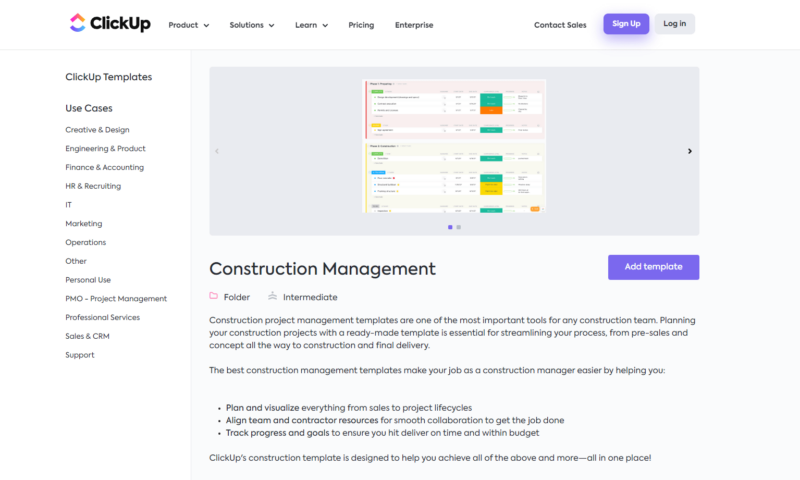
What Is the Best Project Management Software?
The best project management software is the one that has all the tools you need without being too complex or expensive. Below are a few of our favorite project management tools:
- monday.com — An all-in-one project management suite that’s affordable and supports multiple project management processes. Check out our monday.com review.
- ClickUp — An affordable dot-it-all platform with many task-tracking tools, powerful real-time collaboration features and a fantastic free plan. Here’s our ClickUp review.
- Asana — Another all-in-one platform with kanban boards, Gantt charts, robust dashboards and plenty of templates. Be sure to read our Asana review.
- Jira — One the best tools on the market for Scrum teams, thanks to its excellent backlogs, clean Scrum boards and reports. Learn more in our Jira review.
- Trello — Features easy-to-use kanban boards, unlimited integrations, and one of the best free plans in the project management space. Here’s our Trello review.
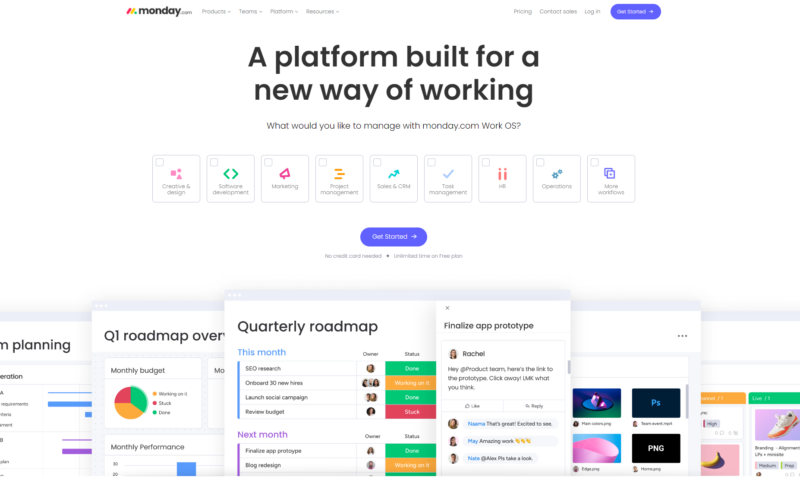
supports multiple ways of working.
The Project Management Life Cycle
All projects should have five distinct phases, no matter what industry or work sector they’re in. Collectively, these phases are known as the project life cycle. The life cycle helps project managers break down chunks of work into sectors. This, in turn, will help them better plan for the tasks ahead.
What Are the 5 Project Management Phases?
The five project management phases are initiation, planning, execution, monitoring and closing. Below, we’ll quickly show you what each phase of the project life cycle looks like before we dive into each stage in more detail.
- Initiation phase — The starting point of a project where a manager must research and prove that a project is feasible and has value.
- Planning phase — Where managers create a project plan (also called “scope”) that includes detailed information about goals, risks, budgets, required resources and more.
- Execution phase — The phase of the project when the project team is completing work.
- Monitoring phase — While overseeing the execution of work, the project leader monitors workers and their output and responds to any issues that may arise.
- Closing phase — Where the manager ensures all tasks are completed, the deliverable is handed to the client, and retrospective meetings are held.
1. Initiation Phase
During the initiation phase, project managers research the project and create a project scope (project charter) that shows stakeholders, clients or company executives why the project is needed, what it will deliver, and that it has value and is feasible. Once the project has been approved, the manager moves on to the planning phase.
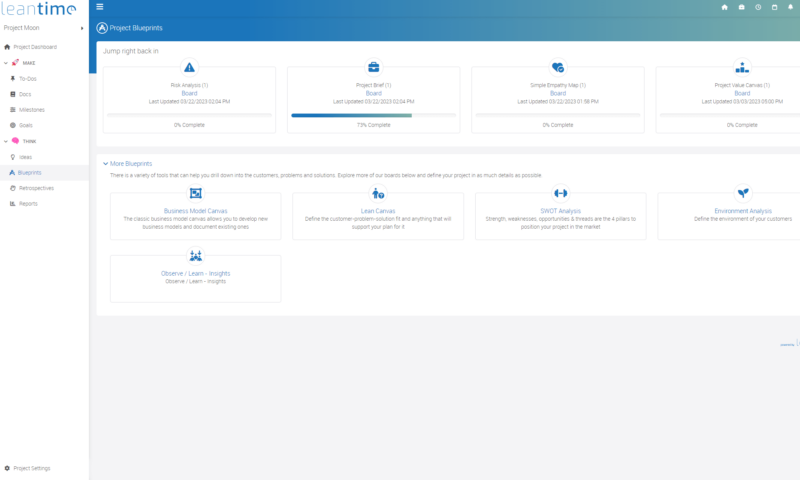
that can help them create a project charter.
2. Planning Phase
During planning, the manager — after speaking with stakeholders — sets budgets, details the end goal, considers risks, gathers resources, and sets a project timeline with milestones and tasks. The manager also conducts a kick-off meeting, as well as assigns tasks and responsibilities via RACI charts. By the end, team members will know the plan and understand expectations.
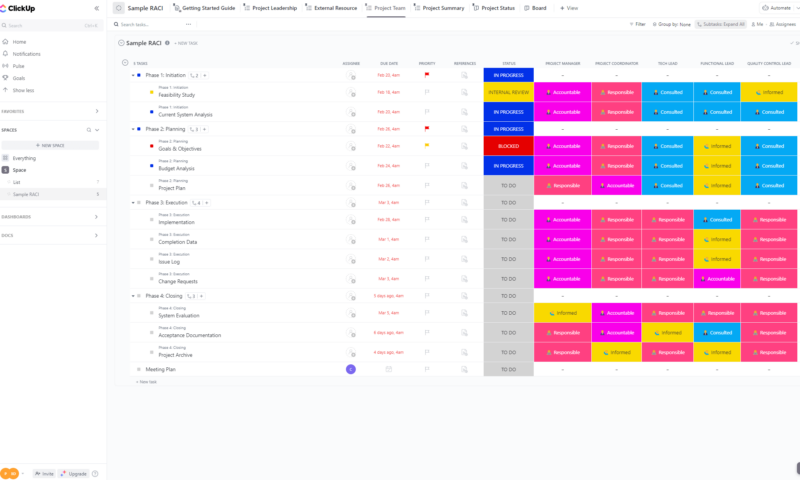
and responsibilities to team members.
3. Execution Phase
Next is the execution phase. This part of the project life cycle is when the team completes the tasks and assignments that have been set. The manager oversees the project by monitoring project progress on Gantt charts, Kanban boards or lists, conducts update meetings and makes changes to personnel and resources as needed.
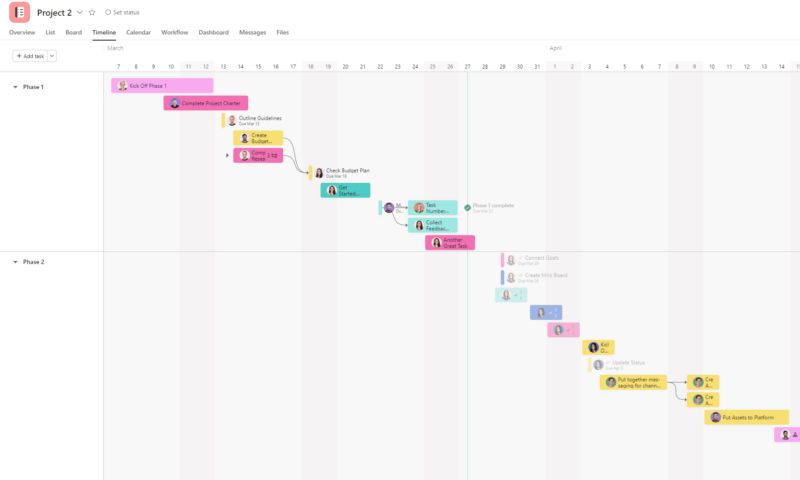
its milestones, tasks and subtasks.
4. Monitoring Phase
The monitoring phase requires the project leader to track key performance indicators, handle issues, monitor team performance, and check the timeline and budgets. The leader must also ensure that additional requests outside the project scope are accounted for. Otherwise, there could be scope creep, which is when a project falls behind schedule and goes over budget.
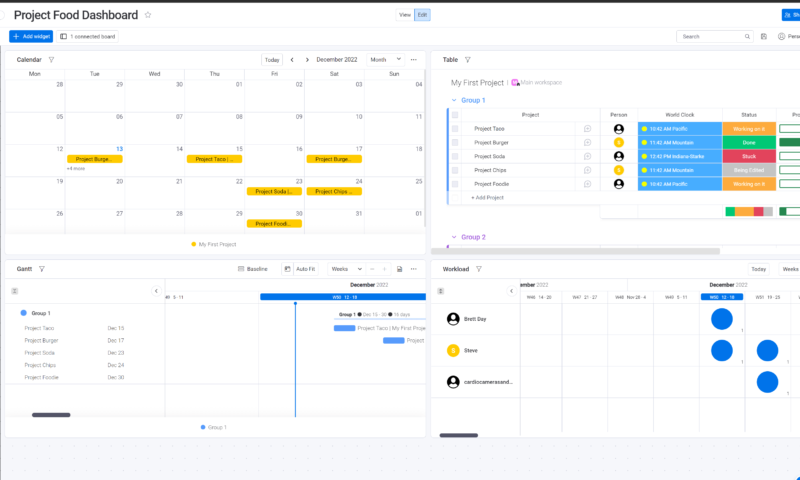
5. Closing Phase
Closing is the final stage of the project life cycle. During this phase, the leader ensures that all tasks are complete and the product is ready to be delivered to the stakeholders. Once the project is closed, the manager completes project documentation, holds a retrospective meeting to discuss wins and losses, and releases team members and resources.

retrospective meeting documents with just a few clicks.
What Are the Key Project Management Roles?
Key project managment roles include not just the project manager but also the stakeholders, sponsers and client. Not all project management methods use the same names for roles, and some methods have more specialized teams. However, the most common roles and positions are listed below.
- Project manager/Scrum master — The leader of the project is responsible for everything that happens during the project and for project delivery.
- Project teams — The workforce that completes work on the project and, hopefully, hits project goals; this can comprise a few or numerous individuals who form specialized or cross-functional teams.
- Project stakeholders — Those with a vested interest in the project. Managers must stay in constant contact with stakeholders throughout the project to deliver project updates and to receive feedback.
- Project sponsors — A project sponsor is a representative of the company for which the project is being completed. Project sponsors act as a liaison between the client and the manager.
- Project client — The company or individual to which the final product is delivered.
How to Become a Project Manager
There are many ways to become a project manager. Whether you want to be a contract or a freelance project manager is up to you. To gain experience, you can work as part of a project team and rise through the ranks or earn certifications from colleges and institutes. We’ll list some of the best project management certifications below.
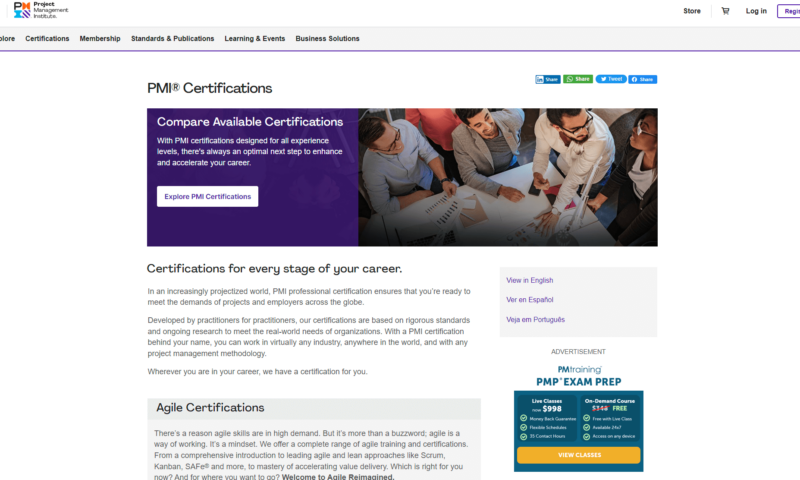
Best Project Management Certifications
- Project Management Professional (PMP) — A certification offered by the Project Management Institute (PMI); the PMP covers many methodologies and a variety of project management principles and topics.
- BVOP Certified Project Manager — The BVOP Certified Project Manager course will teach you all you need to know about technical project management and how to manage teams and individuals.
- Certified Scrum Master (CSM) — If you want to lead Agile Scrum teams and learn about Scrum events and more, the Certified Scrum Master Course (CSM) offered by the Scrum Alliance is for you.
- PRINCE2 — If you like traditional project management methodologies and prefer to operate in highly structured environments, the PRINCE2 certification could be a good fit.
- PMI Agile Certified Practitioner (PMI-ACP) — Another course offered by PMI, the Agile Certified Practitioner (PMI-ACP) certification, is one of the best for those who want to focus on Agile frameworks.
- SAFe Agilist — If scaled Agile projects (projects that span across entire enterprises) interest you, you’ll be hard-pressed to find a better option than the SAFe Agilist certification.
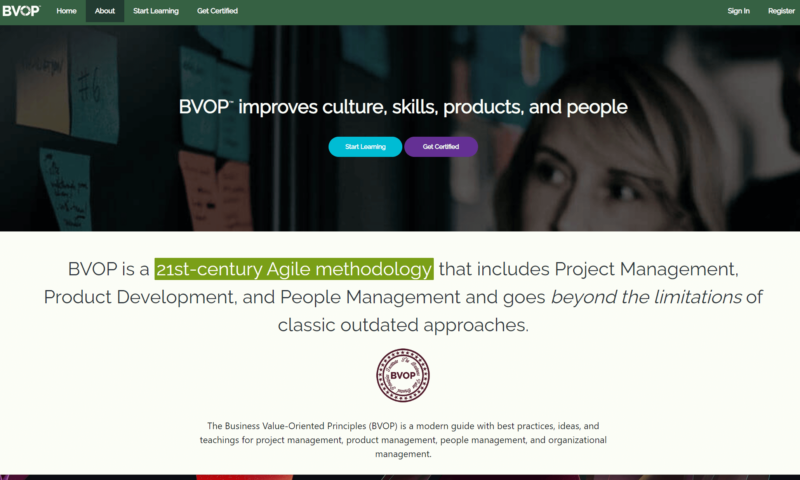
The list above shows just a few of the excellent project management certifications that are out there. If you’d like to learn about more courses and certifications, check out our roundup of the best project management certifications. If you want to focus on Agile project management, read our roundup of the best Agile project management certifications.
Project Management Best Practices: 8 Tips & Tricks for Successful Project Management
Not all projects are the same. Some will be easy and have few team members, while others will be complex monsters with large teams and many tasks. Still, no matter what size project you’re managing, if you follow the eight tips below, you can put yourself on the path to project success.
- Hold regular meetings — You can have the best plans in the world, but changes to your plan are inevitable, so you should hold regular team meetings. Use the meetings to discuss changes, project progress, problems and expectations, and be sure to thank your team.
- Set realistic goals and timelines — When creating your project plan, meet with stakeholders to develop realistic goals and timelines. Consider the size of the team, the budget and the team’s expertise, and set dates and goals that you know the team can hit.
- Establish roles and responsibilities — Do not go into a project without defined roles and responsibilities. As a manager, you need to know who is doing what, and team members need to know who to turn to with problems. Don’t be scared of using RACI charts; they can help clear up confusion surrounding who does what on your team.
- Leverage project management software — It wasn’t long ago that project managers had to use whiteboards and sticky notes to manage a project. Now, robust project management software solutions can help you plan, organize, track team members and tasks, and automate duties. Use this software to your advantage.
- Champion collaboration — A team that rows the boat in the same direction will make it to the finish line. Use real-time collaboration tools to bring the group together to work on tasks and use meetings and chat tools to communicate transparently. The more the entire team works together, the better the chance of meeting project deadlines.
- Be open to feedback — Project managers must offer feedback and guidance to the team; however, this doesn’t mean you should ignore the team’s feedback. Be open to constructive criticism from your team because someone might have an idea that could flip a failing project and put it back on the right path or help you become a better manager.
- Identify risks — Take time at the start of your project to identify risks. If you skip this step, you could find yourself in a mess with no predetermined way out. Grab a risk template, fill it out, and share the possible risks with stakeholders, the client and your team.
- Pick the right project management methodology — If you want to help ensure a project’s success, pick the right methodology. For example, you will have a bad time using a highly structured method like PRINCE2 to develop software. Use an agile method like Scrum instead. Research each methodology and pick one that suits the project.
Final Thoughts
Projects have many moving parts, multiple teams and people to deal with, and a lot must be considered before any project gets rolling. In a nutshell, project management isn’t easy, and if you’re not careful, you could find yourself in a bind.
Still, if you follow this guide, learn about the various project methodologies, roles, software, courses and certifications, and follow our expert tips, you can have a successful project management career. You can read our other guide comparing PMO vs project manager roles.
What do you think about this project management for beginners’ guide? Are you planning to take one of the courses we mentioned? Do you want to be a contract or freelance project manager? Have you used any of the project management software we mentioned? Let us know in the comments, and as always, thanks for reading.
FAQ: Project Management Guide
The four main types of project management are Waterfall, Kanban, Agile and Scrum.
The five phases of project management (the project life cycle) are initiation, planning, execution, monitoring and closing.
There are two ways to become a project manager. You can be part of a project team, learn the ropes and rise through the ranks to project manager, or you can earn certifications and qualifications from colleges and other learning institutions.


